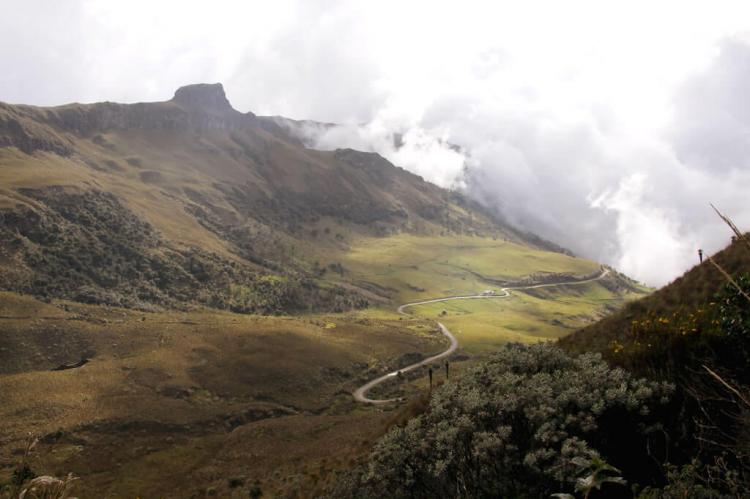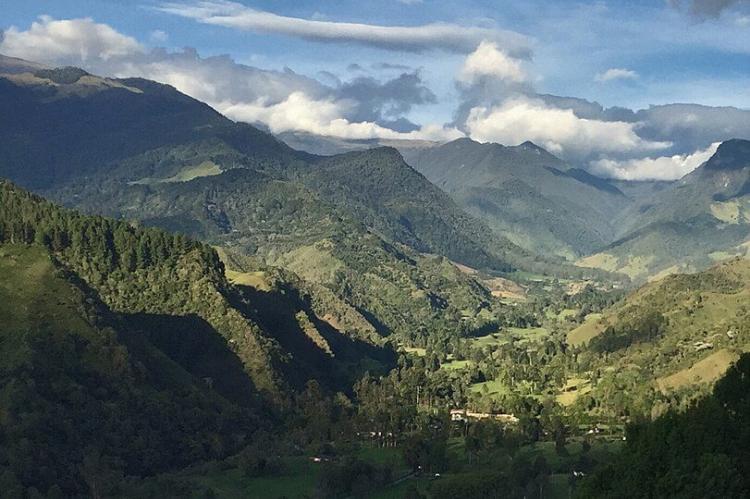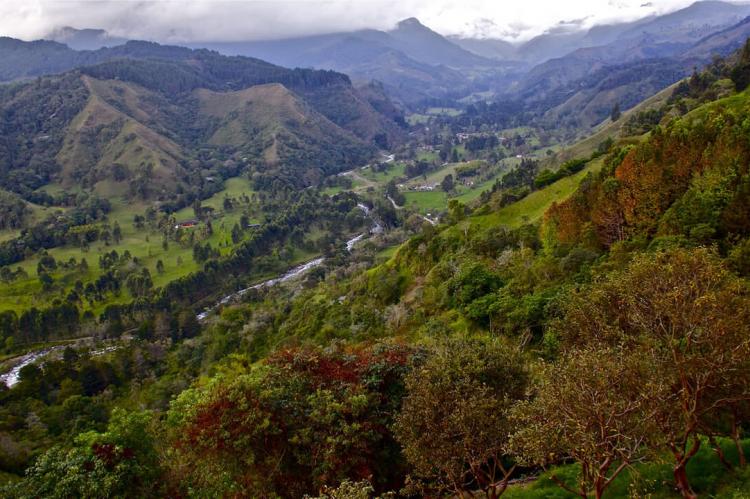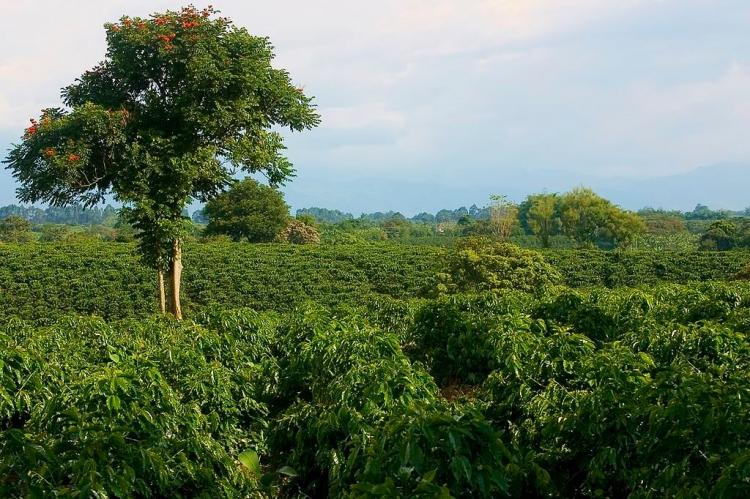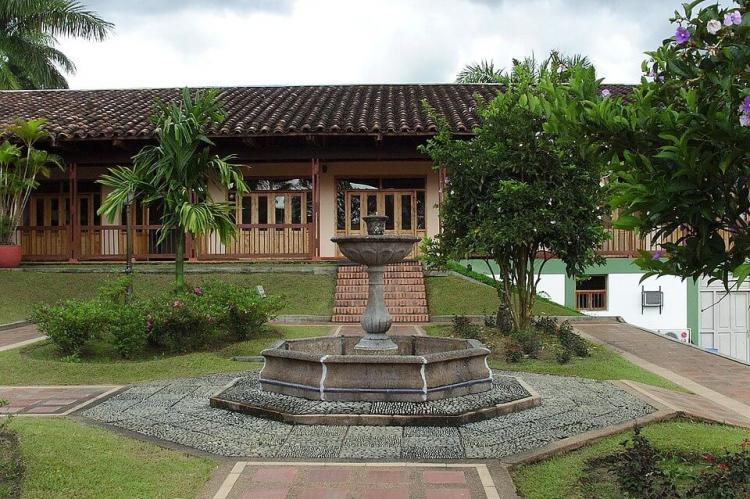Colombia's Coffee Triangle and Paisa Region: A Cultural and Culinary Gem
Nestled within the heart of Colombia's picturesque Paisa region, the Coffee Triangle, also known as the "Eje Cafetero," is one of the world's premier coffee-producing regions. Nestled in the Colombian Andes, this region boasts ideal weather conditions, diverse geography, and a rich history of coffee cultivation.
Colombia's Coffee Triangle and Paisa Region: A Cultural and Culinary Gem
Nestled within the heart of Colombia's picturesque Paisa region, the Coffee Triangle, also known as the "Eje Cafetero," is a testament to the country's rich cultural heritage and status as one of the world's premier coffee-producing regions. Stretching across the rugged landscapes of the Colombian Andes, this area is characterized by its ideal weather conditions, diverse geography, and a long tradition of coffee cultivation.
The Coffee Triangle
The Coffee Triangle encompasses the departments of Risaralda, Quindio, and Caldas, along with their respective capital cities—Pereira, Armenia, and Manizales. Each town is a vibrant urban center surrounded by verdant coffee plantations and breathtaking landscapes. It's not just the natural beauty that draws visitors; the region's rich history and deep-rooted coffee culture add to its allure.
Coffee production in the Coffee Triangle began in the mid-19th century when the crop was introduced to the Caldas district. The region's perfect combination of weather, geography, and soil quality soon led to the production of high-quality coffee beans, setting the stage for the area's global reputation as a coffee paradise. Today, the Coffee Triangle is synonymous with some of the finest Arabica coffee in the world.
The Coffee Triangle's farmers have perfected their craft over generations, employing specialized growing, harvesting, and processing techniques. Despite advancements in agricultural technology, many farmers still adhere to traditional methods, including the labor-intensive "grain by grain" processing technique, which ensures meticulous attention to detail and results in beans of exceptional quality.
The iconic figure of Juan Valdez—a symbol of Colombian coffee culture—was introduced in 1958 to promote the nation's coffee industry. Dressed in traditional Paisa attire—a carriel, aguadeño hat, and poncho—Juan Valdez embodies Colombia's coffee farmers' hard work, dedication, and pride. The character has become an international ambassador for Colombian coffee, helping to distinguish it from blends with beans from other countries.
In addition to its renowned coffee production, the Coffee Triangle boasts many attractions for visitors. Theme parks like the Colombian National Coffee Park in Quindío offer immersive experiences where visitors can learn about the coffee-making process, from bean to cup. Cultural festivals, artisanal markets, and outdoor activities such as hiking and birdwatching further enrich the region's tourism offerings.
Paisa Region
Beyond its association with coffee, the Paisa region is celebrated for its historic architecture, vibrant culture, and warm hospitality. The region's steep-sloped valleys and lush greenery create a stunning backdrop for its colonial-era towns and cities.
The Paisa region encompasses the departments of Antioquia, Caldas, Risaralda, and Quindío, as well as parts of Valle del Cauca and Tolima. However, it is the cultural heartland of Antioquia, where the Paisa identity is most deeply rooted.
Paisas, often called "Antioqueños," are known for their strong work ethic, resilience, and entrepreneurial spirit. While they primarily identify with their home region, Paisas can be found throughout Colombia and beyond, contributing to its cultural diversity and economic development.
The region's main cities—Medellín, Pereira, Manizales, and Armenia—are vibrant hubs of commerce, culture, and innovation. Medellín, in particular, has undergone a remarkable transformation in recent years, earning recognition as one of Latin America's most innovative cities.
Its architecture, cuisine, and traditions reflect the Paisa region's cultural heritage. Colonial-era churches, colorful plazas, and quaint cobblestone streets transport visitors back in time, while local dishes like bandeja paisa—a hearty meal featuring beans, rice, plantains, and meat—offer a taste of authentic Paisa cuisine.
Conclusion
Colombia's Coffee Triangle and Paisa Region blend natural beauty, cultural heritage, and culinary excellence. Whether savoring a freshly brewed cup of coffee amid the rolling hills of the Coffee Triangle or exploring the historic streets of a Paisa town, visitors are sure to be enchanted by the region's charm and hospitality.
![Coffee plantation, Coffee Triangle, Colombia by Triángulo del Café Travel [CC BY (https://creativecommons.org/licenses/by/2.0)] Coffee plantation, Coffee Triangle, Colombia](/sites/default/files/styles/large/public/cafetales_en_colombia_opt%20%281%29.jpg?itok=qZC6IJ4p)
